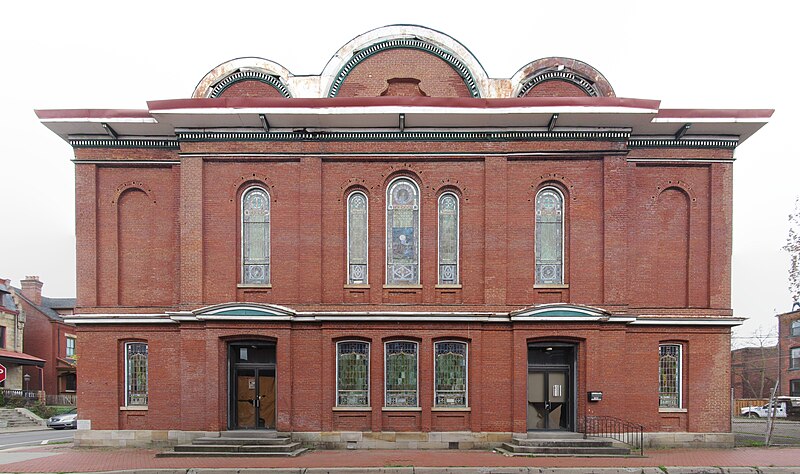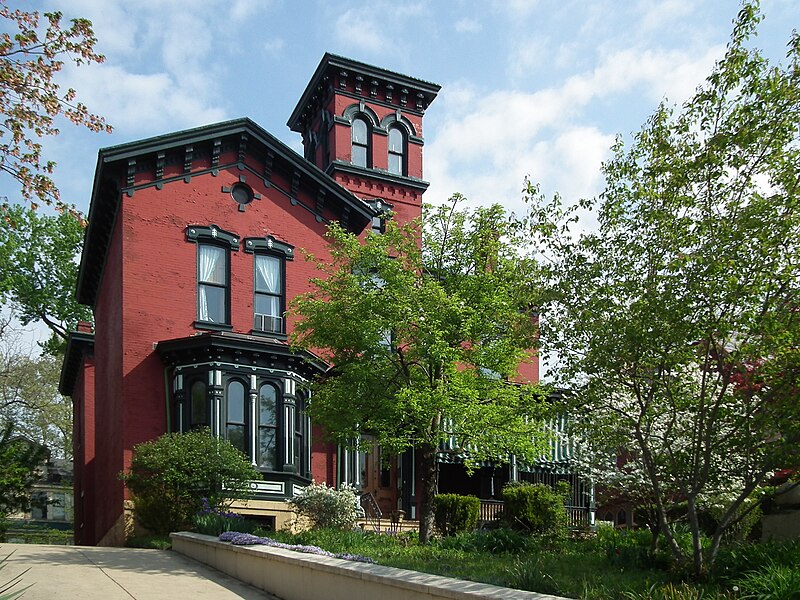
-
Sun Through Japanese Maple
-
A Bit of Good News from Abdell Street, Manchester

A year ago we published this picture of a row of houses in Manchester, with the second from the left under sentence of condemnation after a fire. At the time we were not sure whether it would be worth enough to restore. But it has been restored, and the whole row is looking neat and attractive again:
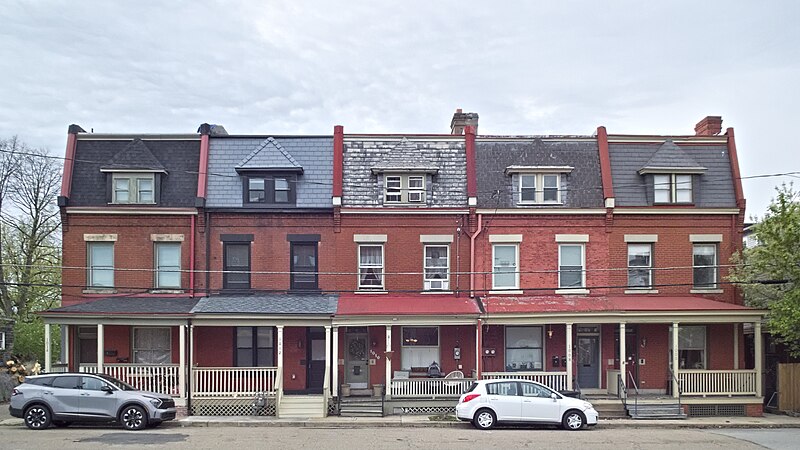
You would hardly know anything had happened except for a bit of soot on the bricks, which is hardly news in Pittsburgh, and the fact that the trim has been painted black.

-
The Grand Lady of Sheffield Street, Manchester

Update: This house has a whole history written by the late Carol J. Peterson (PDF), so old Pa Pitt has more information now. The house was built between 1872 and 1877; it was built as a double house, and divided into six apartments by 1910. The article as originally written follows.
Father Pitt does not know the whole history of this building. It was probably built in the 1870s, though a change of outlines on the map between 1882 and 1890 may indicate that it was enlarged then. It appears as a double house on the old maps, though always under single ownership, so perhaps the single entrance is newer, from the time it was converted to apartments. It is certainly a grand example of the Italianate manner.
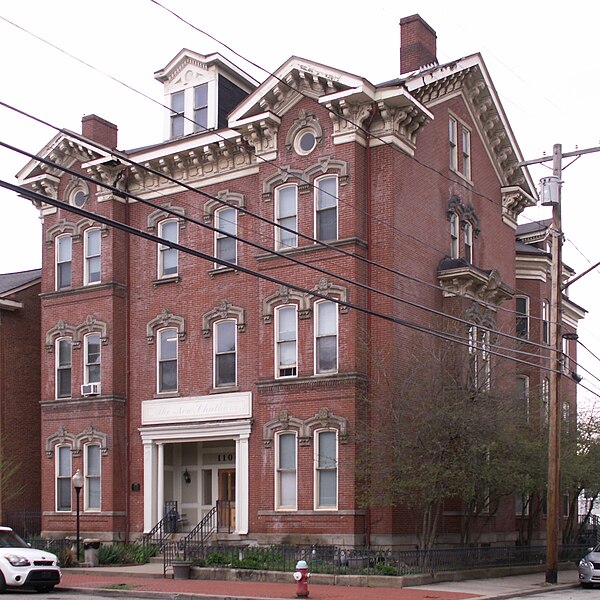
Konica-Minolta DiMAGE Z6. -
A Stony Row on Liverpool Street, Manchester

Kodak EasyShare Z1285. This row of stone-fronted houses is a good example of late-Victorian eclecticism. The heavy rustic stone and elaborate foliage decorations say “Romanesque,” but the porch columns have “modern Ionic” capitals typical of the Renaissance. And it all works together just fine, though it might give an architectural pedant hives.

Nikon COOLPIX P100. 
The stonecarving was probably done by Achille Giammartini, who lived a few blocks away on Page Street.

Hiding in the shadows is a whimsical grotesque face that may remind us of somebody we know.
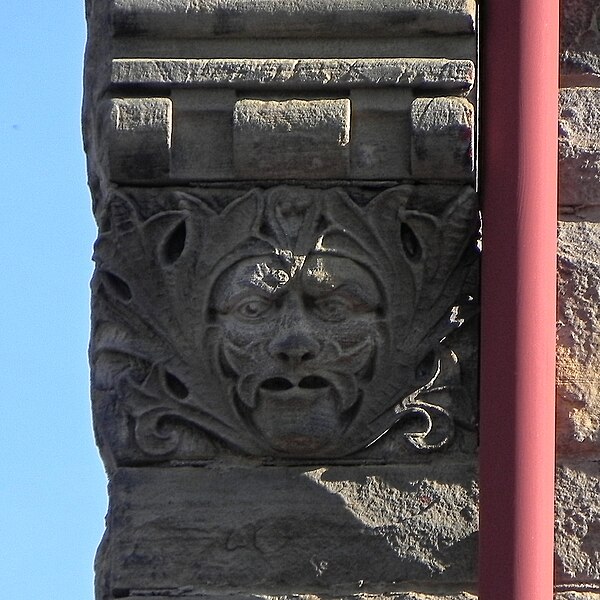

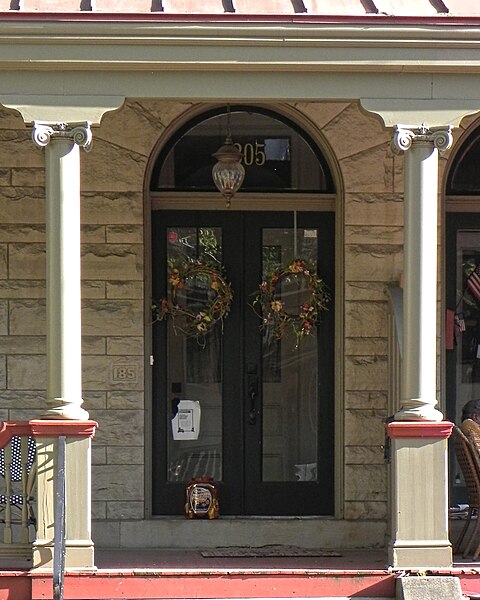
Note the old address, 185, carved in stone beside the door to what is now 1305 Liverpool Street. The addresses in Manchester changed at about the time Allegheny was taken into Pittsburgh.

-
Chimney Pots in Manchester
-
Clarence and Mary Pettit House, Manchester

This house has a more detailed history at the Manchester Historic Society’s site (PDF), so old Pa Pitt will only mention the highlights. It was built for Clarence and Mary Dravo Pettit in 1891 from a design by Thomas Scott, whose public buildings would mostly be done in a Beaux Arts classical style; here, however, he has jumped on the Richardsonian Romanesque bandwagon, since the style became practically a mania in Pittsburgh after the county courthouse was built in the 1880s.

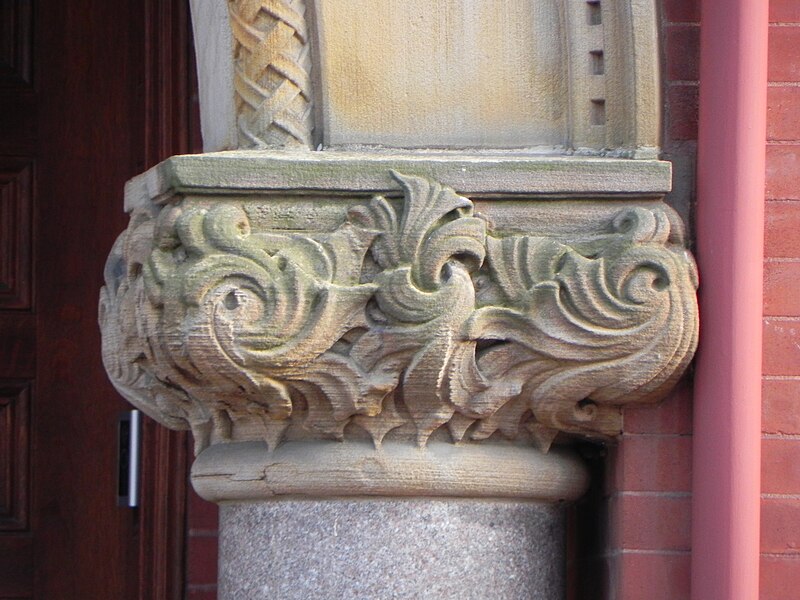
It is likely that the decorative stonecarving was done by Achille Giammartini, whose own house was a short stroll from this one.

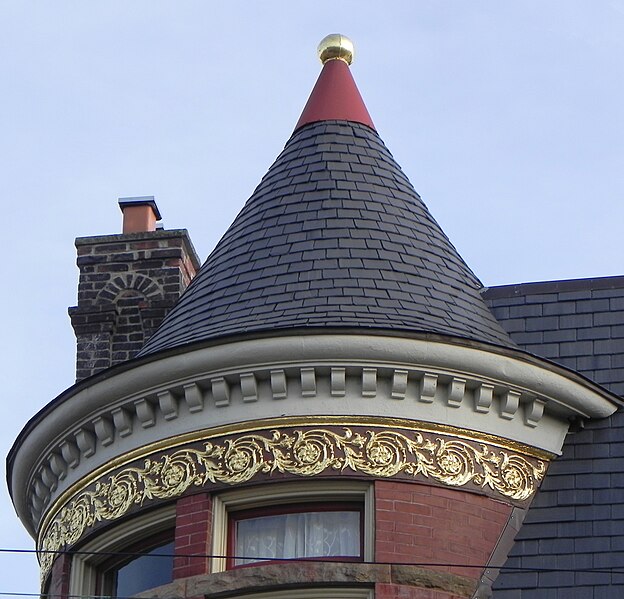
If your turret has a decorative foliage frieze, you might as well gild it. And don’t forget the finial at the peak.

-
Fifth Ward Manual Training School, Manchester

Now part of the Conroy Early Childhood Center, this old school hovers between classical and Romanesque styles, which means that perhaps the best term for it is Rundbogenstil, the word old Pa Pitt most likes to pronounce in public.
Since it has been made an annex of a larger building, it no longer requires its main entrance, which leads to this architectural dissonance:

Addendum: The particularly fine inscription and relief work were done by Achille Giammartini, who lived a few doors down on Page Street.
-
Italianate Mansion in Manchester
-
Victorian Gothic in Manchester


